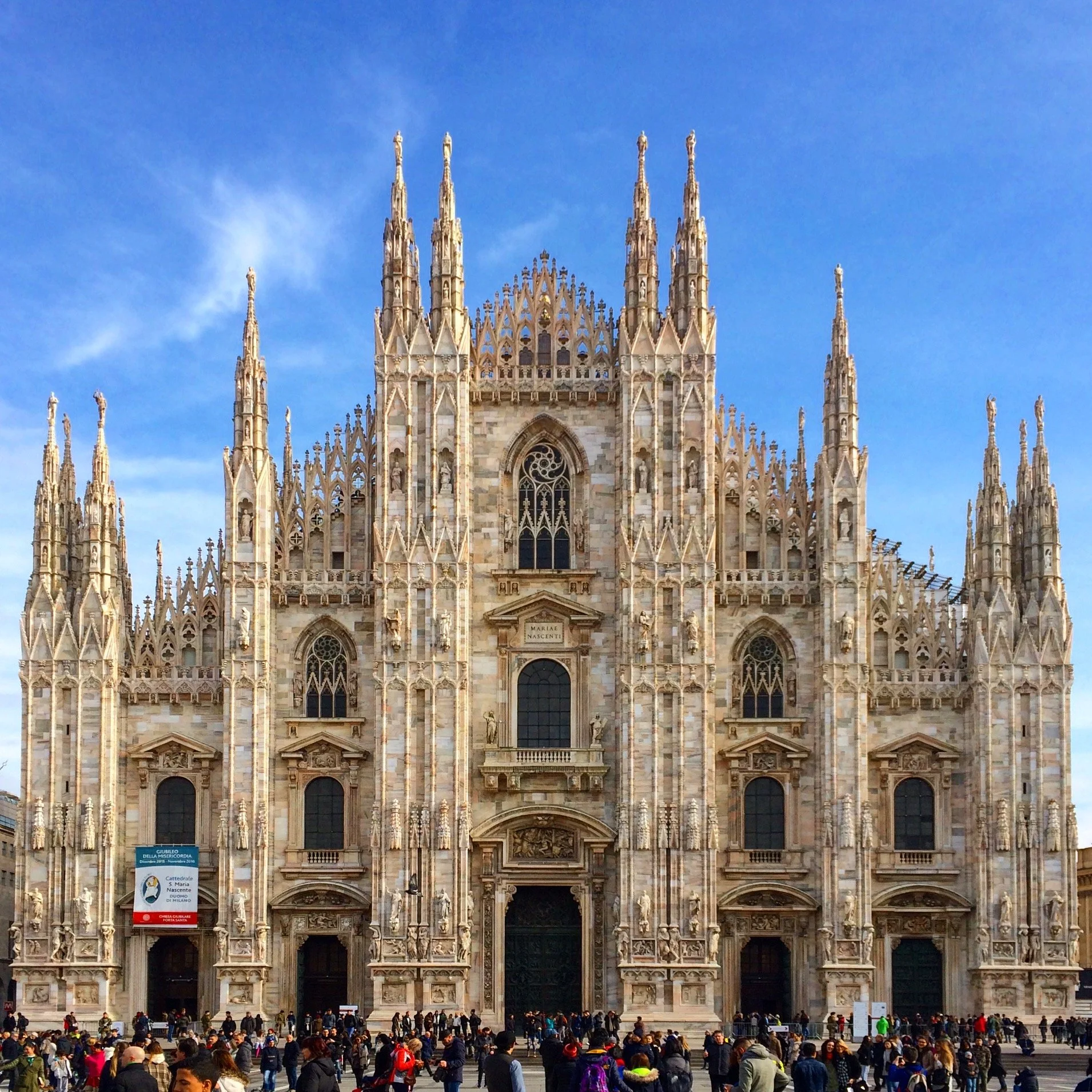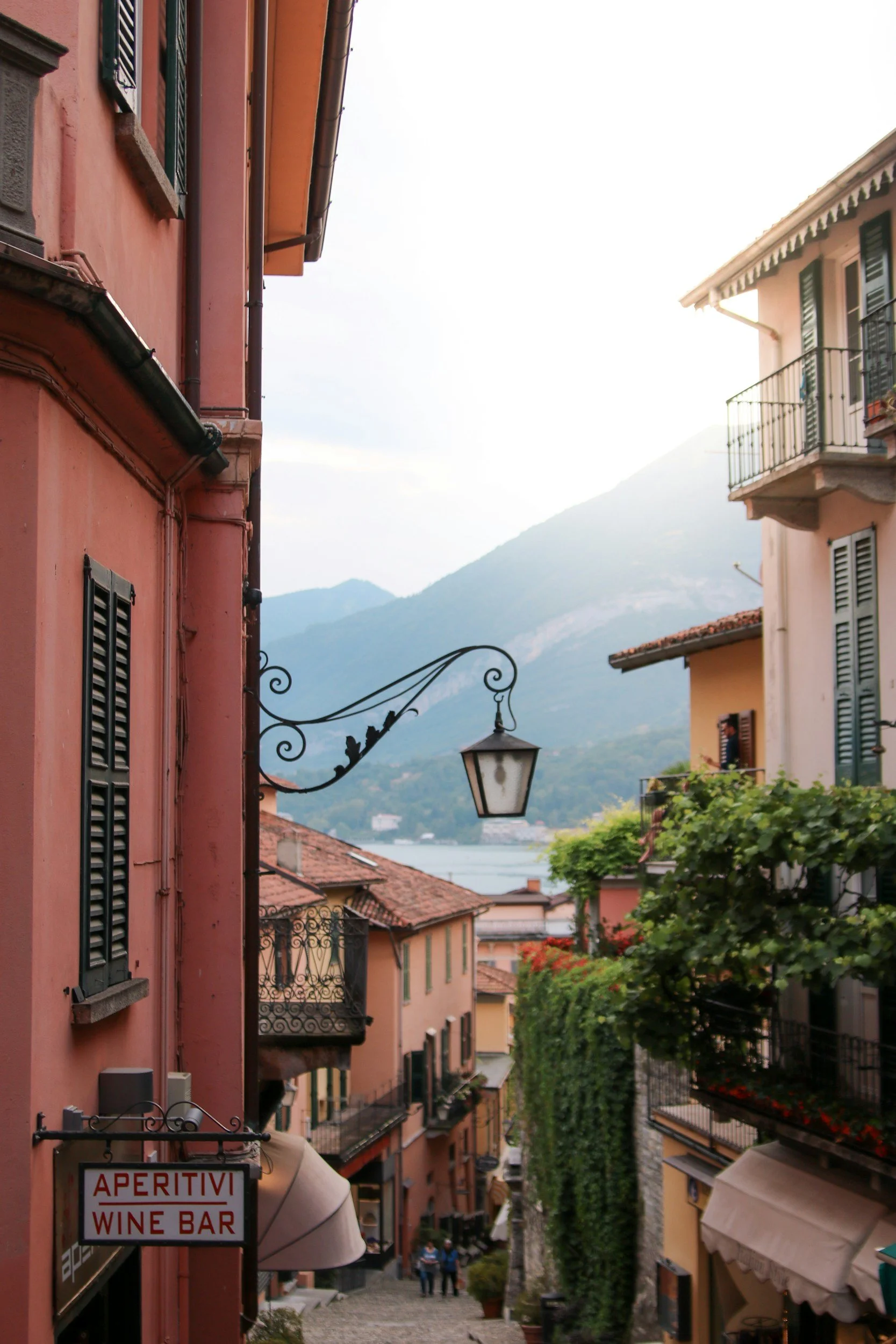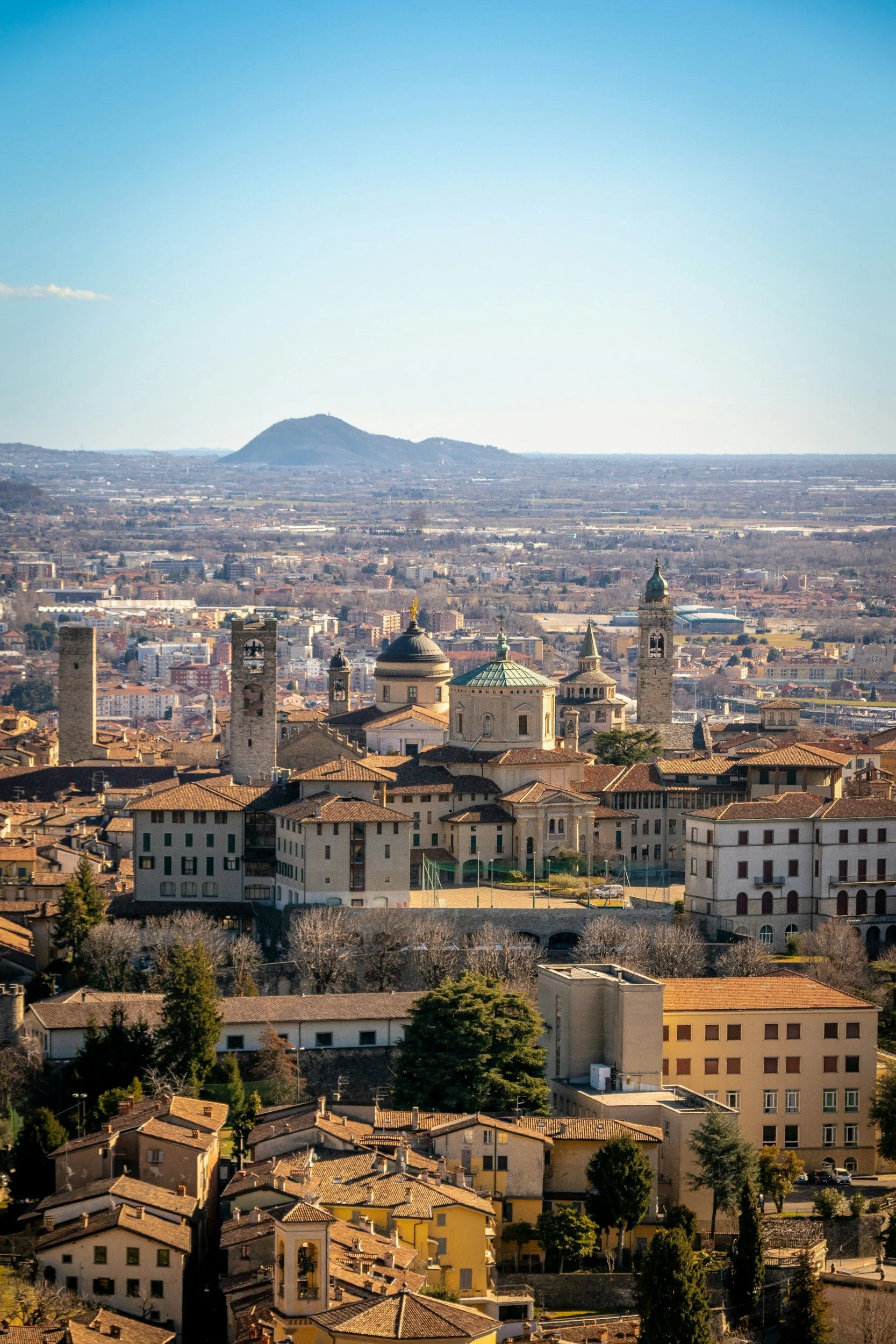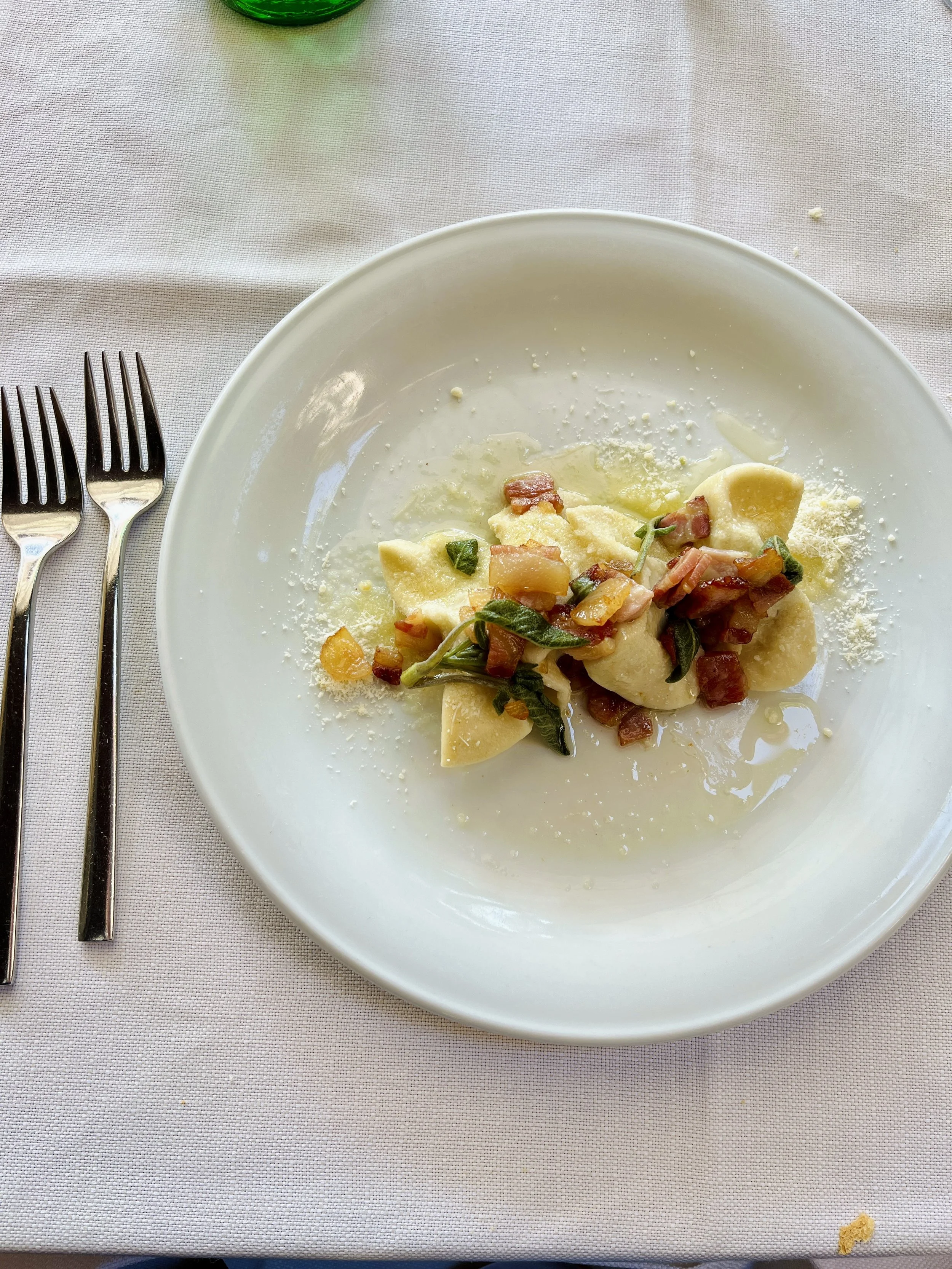image provided by Symmetry Breakfast
If you’ve been following Curious Appetite on social media, you might have seen we launched a new food tour in Milan! It’s also received a mention in Forbes Travel as a suggested culinary activity when visiting in Milan. Read the reviews coming in on Tripadvisor!
Dedicated to discovering the city’s most storied eateries and culinary delicacies, our Insider’s Milan Food Tour is for curious travelers who want partake in Northern Italian coffee culture, indulge in proudly made sweets, comforting primi (first courses) laden with butter and melted cheese, and much more.
With great museums, incredible restaurants and Italy’s premier fashion and design scene, Milan has more than enough to keep any visitor busy! But for the ultimate Milanese vacation, you might consider adding a few activities that are just beyond the city limits.
Milan’s central location and accessible transportation make it easy for visitors to venture out—even if just for an afternoon—to neighboring historic and cultural sites and scenic vistas.
So hey, why not extend your stay and visit these three incredible neighboring towns?
Como
The sparkling blue waters and sweeping Alpine views of Lake Como made famous by George Clooney are just a 90-minute drive (or two-hour train ride) from Milan.
Como has a long history that dates back to the Celts and the Roman Empire, when it was known as Novum Comum. In the Middle Ages, the area experienced periods of self-governance as a commune, before cycling through Spanish, French, and Austrian rule. The modern era saw Como flourish as a center for the silk industry and a popular destination for wealthy visitors, attracted by its beauty and cultural heritage.
When we talk about Lake Como, we are really talking about three distinct and very popular towns. There is the namesake Como town. Trains run frequently here, check Trenitalia.
Breathtaking Varenna on the eastern shore of the lake is also easy to reach by train – about an hour from Milan. Varenna is well positioned for visiting nearby Bellagio, the final of the three towns known for its romantic charm and cute little alleyways, which you can reach via a short ferry ride.
You’d be hard pressed to visit all three towns in one day, even if you started early, so it’s a good idea to do your research first and prioritise.
Or you can skip the tourists all together and visit my personal favorite - Lecco, which is insanely underrated and astonishingly beautiful. It’s home to Villa del Balbaniello, one of Como’s most beautiful villas, full of vast gardens and dramatic views. You might recognise it from Star Wars.
For more amazing scenery, take the funicular from the centre of Como town up to Brunate to enjoy amazing views of the lake. On a clear day, you can see well into Switzerland.
Don’t miss:
Agoni. It might come as no surprise that Como’s cuisine is fish heavy - perch, trout, char, whitefish and, the local specialty, agoni. Pale gray, around eight inches long, agoni are traditionally preserved in salt to produce Como’s most iconic ingredient - missoltini. Stored in tins with bay leaves, the dried fish is usually drizzled with oil and served alongside a polenta made from corn and buckwheat called polenta taragana. You can try it at Osteria Vecchia Molo in Laglio or keep an eye out for it in traditional trattorias throughout the area.
As for wine, Bistrot Muralto in Como town, which serves coffee by day and local beers and wines by night. Keep an eye out for verdese - this native Italian grape originates from the provinces of Como and Lecco.
Bergamo
With its historic Città Alta and more modern Città Bassa, Bergamo has plenty to keep day trippers occupied. The city is a 40-minute drive or 50-minute train ride from Milan with the train costing you less than a plate of pasta.
Start your visit with walk along its gargantuan city walls. Bergamo’s Città Alta was founded by Alpine-dwelling Celts, and then taken over by Romans, who made it into an important stop for those crossing the Alps. In 1428, the Venetians arrived, making it the western outpost of their empire - hence the walls, which are now a UNESCO World Heritage Site.
Once you’ve had your fill of the walls and the 12th century landmarks in Piazza Vecchia, take the funicular to the Città Bassa, where former countryside villages have been enfolded into the city’s sprawl. Here you can check out the Galleria D’Arte Moderna e Contemporanea di Bergamo, which looks like a modern building, but was originally a 15th-century convent, and has a large and varied collection.
Don’t miss:
Bergamo is famous for casoncelli - a stuffed pasta that can trace its roots back to the 15th century. “Casonsèi” (as they are called in local dialect) are filled with a lot of different things. The most traditional have grated stale bread and cheese, but other variations include spinach and Swiss-chard, ham, meat broth, raisins and even nougat. Try them swimming in butter at Trattoria La Colombina in the Città Alta.
For sweets, you can’t miss Cavour pastry shop and a bite of polenta e osei.
For gelato, you can’t go past La Marianna. With tables outside overlooking the hills unfolding below, this bar-pasticceria invented one of Italy’s most iconic flavors, stracciatella (chocolate-veined cream), in 1961, and the Panattoni family still make it with a bagnamaria to melt the chocolate.
Turin, the elegant capital of Italy’s Piedmont region, is next door to France (imagine the cheesy influences!). Photo: Coral Sisk.
Turin
The culturally immense, delicious city serving copious amounts of chocolate, hazelnuts, vermouth, old-school snacks like vitello tonnato and tramezzini, raw heritage meat tartare galore and an unreal pasta game is just a 45-minute train ride (or 1 hour 45 minute car ride) from Milan. Best train route is via fast train and prices vary, book in advance for best fare. Plus Caffe al Bicerin is worth the visit alone!
Touristically speaking, Turin is perhaps best known for its Museo Egizio, where one of the most comprehensive collections of Egyptian artifacts outside Egypt is housed. But Italy’s fourth largest city and the capital of Piedmont has so much to offer - from Baroque architecture resembling that of Paris or Vienna to white slashes of snow-capped Alpine mountains visible from the grand squares and cobbled streets and more bustling cafes and restaurants than you can visit in a lifetime.
Turin’s 40-plus street markets offer a vibrant and affordable way to experience the rich culinary heritage of the area. The best among them for everything from antique and vintage wares to an assortment of cheeses and cured meats are the Gran Balon, the Mercato di Porta Palazzo and the Mercato Piazza Benefica at Giardino Luigi Martini.
Don’t miss:
While other Italian regions might serve a light selection of antipasti, for the Piedmontese, these are the main event. Meals begin with an assortment of at least three to five plates. Vitello tonnato is the region’s most famous export. An elegant version of surf and turf, this dish features thinly sliced veal served with a rich tuna, caper and anchovy mayonnaise. Try it at Ristorante de Angelino.
In the Fall, get your fill of the famous tartufo d’Alba - the area’s local white truffle. While if you’re craving chocolate, you’re in luck. Piedmont is Italy's leader in chocolate production and Baratti & Milano is the oldest and best confectionery to satisfy your sweet tooth. But there are many more craft makers worth seeking.
For more on what to see and where in eat in Turin, check out my Substack.












